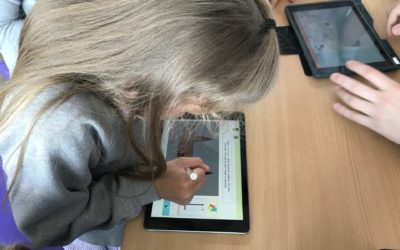
06 Aug Keeping classes writing together even when apart
Kaligo keep classes writing together during lockdown
“Today, children need to have an element of independent learning and through giving children an apple pencil and the freedom to work on approved apps on their iPads, such as Sketches, Kaligo etc. we are helping them to embrace their learning experience. But perhaps one of the best outcomes is that pupils get immediate intervention without adding to teacher workload. A teacher can easily see what progress every pupil is making and whether there are where they should be. We’ve already seen that as our pupils head back to the classroom, the lockdown has had little impact on handwriting and their writing is still on track.”
Benefits
○ Immediate feedback
○ Instant assessment of handwriting ability
○ Reduces the workload for teachers
○ An in-depth view of handwriting for each child
○ The bigger picture of class handwriting progress
Key information :
○ Wayfield Primary
○ Primary School
○ Using Kaligo with 200+ students
Some schools have managed to keep entire classes of children on track with handwriting, even though two-thirds began the lockdown at home.
Wayfield Primary is a school of 260 pupils aged 3 to 11 based in Chatham, Kent. Wayfield never closed its doors to children but when the lockdown began, but only one-third of pupils were in school. Wayfield School used the handwriting app, Kaligo, to ensure all children, both at home and in the classroom, had the opportunity to keep pace and learn together. Children in Reception to Year 6 were able continue their pace of learning, even while they were at home.
“During the COVID pandemic, Wayfield were able to maintain handwriting skills.” Says Matthew Tragheim, Teacher at Wayfield Primary School and Kent ICT Champion of the year. “As the quality of content on the Kaligo platform is so high, our teaching teams find it very helpful. There is nothing on the market that has functions like Kaligo.”
Another reason Kaligo worked very well over the lockdown period is that as it’s based on machine learning (AI), which provides pupils with real-time, automated and corrective feedback. Based on six years of research, Kaligo has collected and analysed 15,000 handwriting strokes.
“The instant feedback given through Kaligo has a significant impact on handwriting improvement. And, for our teachers, in Kaligo they can record verbal feedback, photo feedback and keep records. The children thoroughly enjoy it, and it means that children are more engaged with handwriting and they can practice handwriting whenever they want. The instant feedback provided means that children can hone their handwriting through their own choice and both in school and at home, we can see progress as children have a passion for it.
“Today, children need to have an element of independent learning and through giving children an apple pencil and the freedom to work on approved apps on their iPads, such as Sketches, Kaligo etc. we are helping them to embrace their learning experience. But perhaps one of the best outcomes is that pupils get immediate intervention without adding to teacher workload. A teacher can easily see what progress every pupil is making and whether there are where they should be. We’ve already seen that as our pupils head back to the classroom, the lockdown has had little impact on handwriting and their writing is still on track.”
